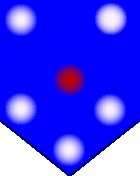




T-44 production came about as a successor to the world-famous T-34.
However, it was a near total redesign. It was made with the intention of
having greater cross-country performance, and more effective armor. In
1943, the plan was to mount the 85mm gun on a new, and improved
platform, taking into account all the lessons learned from the T-34, but
when the T-34-85 was produced, it was clear that the T-44 lost out on
its cutting edge design somewhat (as it shared some features with the
T-34-85), and the design was considered less important than increasing
T-34 production, mostly because developing and producing a new vehicle
would slow down overall production of tanks – something the Red Army
could hardly afford, even by this stage of the war. The T-44 project was
reworked later in the war, and although it was mass produced, it was
still a very secretive design. The T-44 design had some attempts after
the war to give it a larger armament, which led directly on to the
highly successful T-54/55 tank.
T44 Tank


















